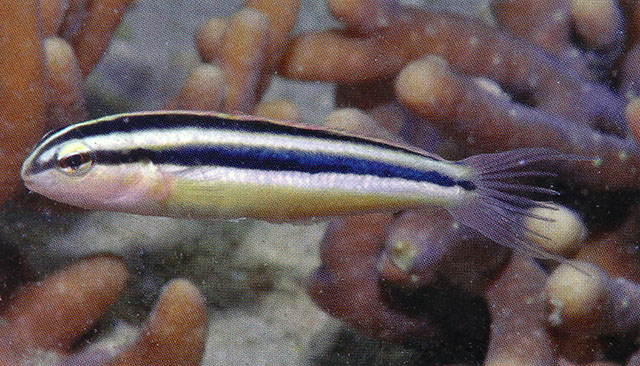| Blenniidae (Combtooth blennies), subfamily: Blenniinae |
| 3.66 cm SL (male/unsexed) |
|
reef-associated; marine; depth range 1 - 5 m |
| Indian Ocean: Indonesia, Komodo Island, Slawi Bay (Ref. 87904). |
|
A species of Meiacanthus (subgenus Meiacanthus) with major portion of dentary gland dorsally positioned and held in place laterally by dorsolateral flange of dentary; dorsal fin IV, 25 or 26; color pattern characterized by a single black mid-lateral stripe that is bluntly rounded at its terminus on the caudal-fin base; dorsal fin pale distally with a wide black proximal stripe; white or yellow stripe above and below dark mid-lateral stripe; belly and flanks pale to rich yellow (Ref. 87904). |
| Adults inhabit sheltered bays, along mangrove and rocky shores (Ref. 90102). Oviparous. Eggs are demersal and adhesive (Ref. 205), and are attached to the substrate via a filamentous, adhesive pad or pedestal (Ref. 94114). Larvae are planktonic, often found in shallow, coastal waters (Ref. 94114). |
|
Vulnerable (VU); Date assessed: 23 March 2012 (B2ab(iii)) Ref. (130435)
|
| harmless |
Source and more info: www.fishbase.org. For personal, classroom, and other internal use only. Not for publication.

